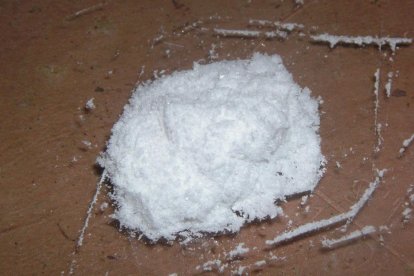Ketamine, the powerful hallucinogen that killed Matthew Perry
Although it is not as common as other drugs such as marijuana or cocaine, its consequences can be fatal, as happened to the "Friends" star.

Ketamine (Public domain / Wikimedia Commons)
The sudden death of Matthew Perry on Oct. 28 left fans of "Friends" devastated. He starred in the show for 10 seasons, making his place in the history of the television industry. The actor was found dead in his hot tub at his Los Angeles home, with symptoms of drowning, circulatory diseases and the effects of buprenorphine, a drug to treat opioid addiction.
Despite trying to solve his drug addiction, as he acknowledged in his autobiographical book "Friends, Lovers, and the Big Terrible Thing: A Memoir," the autopsy revealed that Perry had ketamine, a narcotic that causes hallucinations, in his system.
Recreational use of ketamine
The use of ketamine is not as common as that of other drugs such as marijuana and cocaine. Normally, its recreational use is associated with nightclubs and raves. However, it is not usually a daily use narcotic.
According to an explanatory document prepared by the Department of Justice (DOJ), ketamine is "a dissociative anesthetic that has some hallucinogenic effects," which is what attracts its users, mostly adolescents and young adults, to consume it.
Its effects include "the distortion of the perception of sight and sound," causing users to enter a state of lack of control and disconnection, to such an extent that they think they are completely "outside their physical body."
These hallucinogenic effects can last from 30 minutes to several hours, depending on the amount that users consume.
Powder and liquid forms
Like other drugs such as heroin or cocaine, ketamine is supplied in powder or liquid form. Powder is more common in public, whether in clubs or other places, while ingesting it in its liquid form occurs more often in private settings. The manner of consumption depends directly on the way in which the drug is synthesized.
Furthermore, as the DOJ explains, it is a drug that is consumed both alone and mixed with other substances such as alcohol, cocaine, amphetamines or methamphetamines, even with tobacco.
Physical and mental consequences
Consuming ketamine has two types of consequences, as detailed by the Alcohol and Drug Foundation (ADF). The first are those caused in the short term, which typically last until the next day after being taken: memory loss, disorientation, clumsiness, restlessness and anxiety. There are also long-term consequences, including: mood and personality changes, depression, poor liver or kidney function, loss of smell, loss of memory and concentration, abdominal pain and drug dependence.
Beyond that are the consequences derived from an overdose, such as entering a state of unconsciousness, tachycardia, convulsions, delirium or breathing difficulties. This could have happened to Matthew Perry.
Clinical and veterinary use of ketamine
Ketamine has sedative, analgesic and anesthetic properties, which is why doctors use it for different clinical purposes, such as general anesthesia.
Aside from its uses in people, veterinarians often use ketamine to treat animals. For example, it serves as a tranquilizer for horses due to its properties, and doses tend to be given to them after they perform equestrian exercises or suffer injuries.
The British Association of Psychopharmacology detailed in a document that its use is so recurrent in veterinary medicine that it is "one of the most used anesthetic drugs in animals throughout the world."
Ketamine seizures
Ketamine is made in clandestine laboratories in the United States. But it is also manufactured outside the country, and drug traffickers try to introduce it across borders .
During fiscal year 2023, Customs and Border Protection (CBP) agents seized more than 7,800 pounds of ketamine. So far this fiscal period (through Dec. 19), law enforcement has intercepted around 387 pounds.












